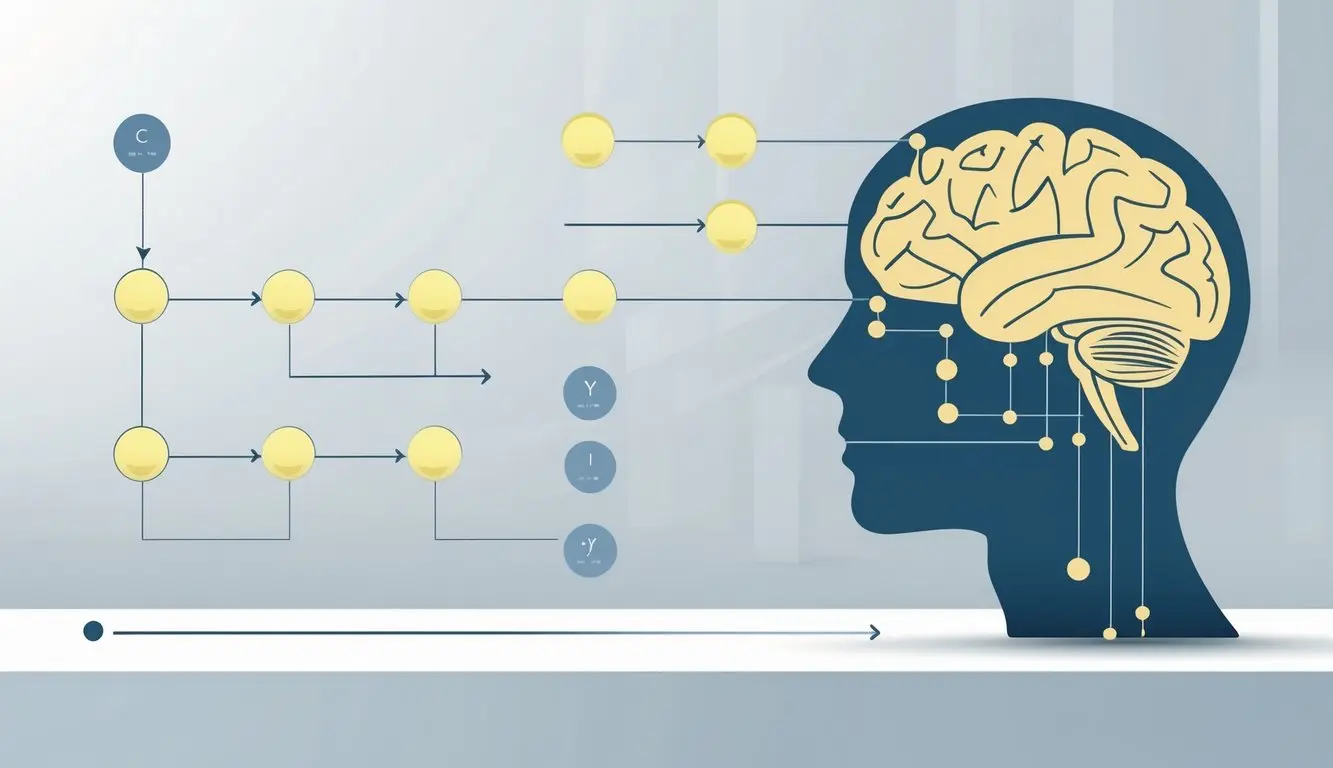Chain of thought (CoT) prompting helps you work through problems step by step. Instead of answering a question right away, you write down each part of your thinking process. This method guides large language models to give you stronger results, especially for tasks that need more reasoning instead of just facts.
You can combine CoT prompting with a simple “few-shot” approach. This means you provide one or a few clear examples before asking the model to solve a new problem. Even a single example can sometimes be enough to show how to reason through a task.
Benefits of using chain of thought prompting:
- Handles math, logic, and multi-step problems better
- Needs fewer examples to perform well
- Helps break down complex tasks for clearer answers
Researchers have found that chain of thought skills tend to appear in bigger AI models. This emergent ability can improve the way you use GPT tools for thinking tasks.
| Method | Works Best For | Examples Needed |
|---|---|---|
| CoT Prompting | Reasoning, complex | 1–3 |
| Direct Answer | Basic, simple | 0 |
When you want clearer, step-by-step answers on hard questions, CoT prompting is worth trying. It can help you solve puzzles, explain choices, and learn new ideas in a logical order.
Zero-shot COT prompting
Zero-shot COT prompting uses a simple trick to help AI solve problems step by step. When you add the phrase “Let’s think step by step” to your prompt, you tell the model to break down its thought process instead of just guessing the answer. This makes the responses more detailed and organized.
You do not need to provide any examples. That’s why it’s called zero-shot. The power of this method is how it works even when you have no training examples to share. It can help you in situations where it’s hard to give sample solutions.
Here’s a quick list of what makes zero-shot COT prompting unique:
- No examples required
- Encourages detailed reasoning
- Works well for questions that need logical steps
- Very simple to use—just add a short phrase
A simple table shows how the output changes:
| Prompt type | User Input | Output quality |
|---|---|---|
| Standard prompt | Question only | Less detailed |
| Zero-shot COT prompt | “Let’s think step by step” + Question | More detailed |
For more on zero-shot COT prompting, see this in-depth guide.
Automatic chain of thought method (Auto-CoT)
With Auto-CoT, you skip hours of writing sample problems and answers by hand. Instead, you use a language model to create step-by-step explanations for different types of questions. This approach helps you get more varied and useful examples for your prompts.
A strength of Auto-CoT is how it builds its collection of examples. It has two main parts:
- Question clustering: First, you group similar questions together.
- Demonstration sampling: Next, you pick one typical question from each group. Then, you let the model write out a step-by-step solution for it.
Here’s a simple table to show these steps:
| Stage | What happens |
|---|---|
| Question clustering | Group questions by similarity |
| Demonstration sampling | Pick one question from each group and generate a solution |
Auto-CoT follows a few easy rules as it builds these examples. For instance, it pays attention to how long the question is and how many steps are in the answer. Some rules may focus on questions with at least five reasoning steps or a set number of words.
By mixing different kinds of sample questions, you lower the chance of mistakes affecting results. You also help the model deal with a wide range of problem types. This method saves time and makes your examples more diverse, which can improve how well your LLM reasons step by step. For more details, read about automatic chain-of-thought prompting in large language models at arxiv.org.
This system is helpful when you want your AI to reason through problems instead of just giving short answers. It pushes the model to write its thinking process out loud, making the final answers clearer and more reliable.
Chain of Thought Prompting FAQs

How does chain of thought prompting help AI solve problems better?
Chain-of-thought prompting breaks a big problem into smaller, logical steps. When you use this method, the AI explains its reasoning, rather than just giving a final answer. This step-by-step approach helps the model stay focused and catch errors along the way. It also lets you see how the answer was reached, making the process more transparent.
Can you show a simple example of chain of thought prompting?
Here’s an example:
Question: If Sarah has 8 apples, gives 3 to her friend, and then buys 4 more, how many apples does she have now?
Chain of thought reasoning:
- Sarah starts with 8 apples.
- She gives away 3 apples. 8 – 3 = 5 apples left.
- She buys 4 more apples. 5 + 4 = 9 apples.
Final answer: Sarah has 9 apples.
This approach mirrors the way many teachers show their work in math.
How does chain of thought prompting differ from standard prompting?
Standard prompting often expects the model to give an answer right away. With chain-of-thought prompting, the model walks through its thinking, showing each reason for each step.
You can see key differences in this table:
| Feature | Standard Prompting | Chain of Thought Prompting |
|---|---|---|
| Explains reasoning | No | Yes |
| Step-by-step detail | No | Yes |
| Transparency | Low | High |
| Good for complex tasks | Limited | High |
What evidence supports the effectiveness of chain of thought prompting in large language models?
Researchers have tested chain-of-thought prompting with powerful models and found it boosts accuracy on tricky problems, like logic puzzles and math word problems.
Studies show large models using this technique solve multi-step questions better than when only given direct prompts.
What’s the connection between chain of thought prompting and tree of thought?
Chain of thought prompting moves in a straight line step-by-step, much like writing out your logic one piece at a time. Tree of thought methods branch out, testing multiple paths or ideas at once. While both help with problem solving, chain-of-thought is more linear, while tree of thought is like looking at many possibilities before choosing the best answer.
What tips should you follow when making a chain-of-thought prompt template?
- Keep instructions clear and simple.
- Break down complex questions into smaller steps.
- Ask the model to explain or show its reasoning.
- Give examples of step-by-step answers in the prompt if you want consistent results.
- Avoid vague requests—be direct about what thinking steps you want.
A solid template should make it easy for the model to focus on each part of the problem, leading to better answers.












